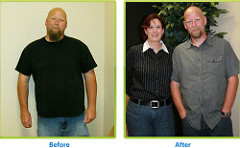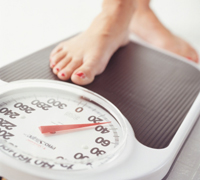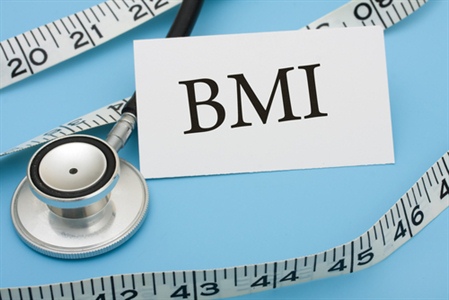The Zone Diet Summarized
The program that is commonly referred to as the "Zone diet" is detailed in the book The Zone: Revolutionary Life Plan to Put Your Body in Total Balance for Permanent Weight Loss by Dr. Barry Sears. Balance is the key focus of Dr. Sears' plan; more specifically, eating the correct ratio of carbs, fat, and protein.
The Zone's food plan consists of 40% of your daily caloric intake in the form of carbohydrate, 30% of protein, with fat making up the final 30%. The book provides a "dietary roadmap" to The Zone. On-line resources are also available.
Foods To Live By
Fat
At every meal, you must eat an adequate amount of good fats. Good fats include Omega-3 EPA/DHA concentrates and monounsaturated fats like extra virgin olive oil. Bad fats include trans fatty acids found in partially hydrogenated vegetable oils and Arachidonic Acid (AA) found in fatty red meats and egg yolks.
Protein
To keep your insulin levels in the Zone at every meal, you must always consume adequate amounts of low-fat protein (about the size of the palm of your hand or about 3 ounces for most females and 4 ounces for most males). A typical snack contains 1 ounce of protein for both women and men. The best protein sources are skinless chicken, fish, turkey, lean cuts of meat, low-fat dairy products, egg whites, protein powder and soy meat substitutes.
Carbohydrates
In addition to good fats and protein, you must also eat carbohydrates at every meal and snack. However, not all carbohydrates have the same effect on insulin levels. Starches (like pasta, potatoes and bread), grains and rice elevate insulin levels too much, whereas, most vegetables and fruits do not spike insulin levels (a few exceptions are corn, peas, bananas and dried fruits). While this doesn’t mean you have to completely eliminate starches, grains and rice from your diet, you must eat much smaller quantities of them compared to your intake of vegetables and fruits.
It’s As Easy As 1, 2, 3
The Zone 1-2-3 Method makes it simple to determine the fat, protein and carbohydrate content of every meal and snack. For every gram of fat you consume you need to eat twice as many grams of protein and 3 times that amount in grams of carbohydrates.
Meals for Females
At each meal consume approximately:
10 grams of fat
20 grams of protein (2x the fat grams)
30 grams of carbohydrate (3x the fat grams)
Meals for Males
At each meal consume approximately:
15 grams of fat
30 grams of protein (2x the fat grams)
45 grams of carbohydrate (3x the fat grams)
Snacks for Females and Males
At each snack consume approximately:
3 grams of fat
6 grams of protein (2x the fat grams)
9 grams of carbohydrate (3x the fat grams)
The 1-2-3 method is an easy way to make sure you get the right balance of fat, protein and carbohydrates to “turn on” a fat-burning metabolism and satisfy hunger at the same time.
The above numbers are approximate - don’t worry about being 100% precise. Hunger control between meals and how your clothes fit are your best barometers for success.
Eating Plan
> Eat a Zone meal or snack within one hour after waking
> Eat every 4 to 6 hours after a meal or 2 to 2½ hours after a snack, whether you are hungry or not
> Assess your hunger level and mental focus before every meal or snack. Lack of hunger and clarity of mind are signs you are staying in the Zone.
> Drink eight 8-ounce glasses of water a day.
> Start every meal or snack with low-fat protein. Next add low glycemic-load carbohydrates (i.e. vegetables and fruits) and good fats (i.e. olive oil). Remember, a typical serving of low-fat protein fits in your palm of your hand and is no thicker than your hand (about 3 ounces for most females and 4 ounces for most males) A typical snack contains 1 ounce of protein for both women and men. At first, a kitchen scale may be helpful for measuring. Don’t worry. You’ll be able to eyeball it in no time. If your plate looks like the diagram above, you’re on the right track.
> Supplement daily with a highly purified Omega-3 concentrate like OmegaRx®.
> Don’t beat yourself up for straying here or there. Your next meal or snack can get you right back on track.
Zone Products
There are several Zone snacking options in cereal, shake, bar and powder form as well as Zone supplements to help you achieve your goals and optimize the benefits of Omega-3’s and eating In the Zone.
Restricted Foods
Ideally, protein sources are low in saturated fats, carbohydrates are low glycemic, and fats are primarily monounsaturated, with a lot of Omega-3 fatty acids.
Conversely, the diet is low in fatty meats, other sources of saturated fat such as butter, most vegetable oil (except for olive oil and similar), grains, added sugars, starchy vegetables, and egg yolks.
Exercise
Since the Zone boosts your energy level you may find exercise easier and more enjoyable than ever before. Just 30 minutes of moderate exercise 3-5 days a week in conjunction with the Zone approach to eating can help decrease inflammation within your fat cells and simultaneously help control insulin levels.
Zone Living
Assessing portion size is one of the main skills of mastering this plan. Like any other new skill, it takes practice. This plan is more of a lifestyle change, not a diet. After meeting your goal weight, you can maintain this healthy lifestyle by staying in the Zone.
You can view the complete article at http://astronutrition.com/blog/book/diets/zone_diet
-
Weight Loss Strategies That Work: 4 Steps You Must Do To Win The Weight Loss Battle
Learning to take bite-size chunks is much more manageable that taking
-
High protein diet boosts cardiovascular health
According to the WHO (World Health Organization) and the CDC, h
-
Diet Food Recipe, Unique Tasty Plans That Help With Weight loss
I have discovered a diet food recipe pla
-
How Exercising Less Helped Me Lose Weight
-
Is Weight Loss Surgery Suitable For You
Weight loss surgery, also known as baria
-
Get Rid Of Love Handles Quickly
Love handles are the lumps of fat that sometimes form on your sides
- DON'T MISS
- Simple Steps To A Low Glycemic Index Diet
- 50 Motivational Tips for Exercise and Weight Loss
- How To Get Weight Loss Vitamins
- How To Find Motivation To Lose Weight.
- Best Tips And Tricks To Lose Stubborn Weight Now!
- The South Beach Diet in a Nutshell
- 5 Quick And Easy Weight Loss Tips That Anyone Can Do
- 3 Super Easy Weight Loss Tips For Getting Rid of Those Stubborn Pounds
- Weight Loss Plans For Effective Weight Loss
- Green Tea - Healthy Or Unhealthy?




